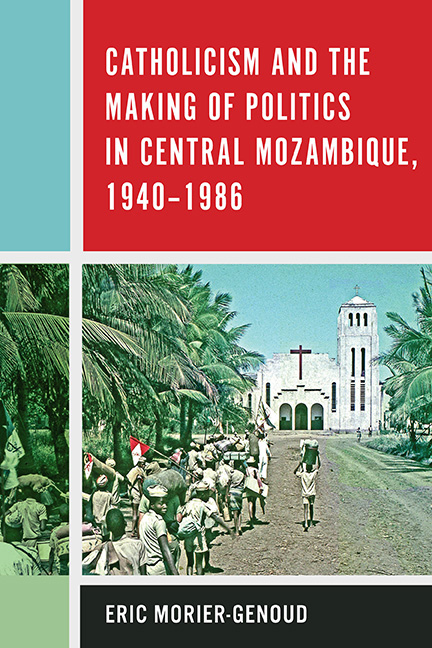Book contents
- Frontmatter
- Dedication
- Contents
- List of Illustrations
- Acknowledgments
- Note on Translations
- List of Abbreviations
- Introduction
- 1 The Making of the Diocese of Beira
- 2 Diversity and Dynamics of the Imperial Church
- 3 The Formation of an African Church
- 4 Gathering Storm: Vatican II Meets African Nationalism
- 5 Decolonization? War, Implosion, and the Vatican
- 6 Independence: Revolution and Counterrevolution
- Epilogue
- Notes
- Bibliography
- Index
5 - Decolonization? War, Implosion, and the Vatican
Published online by Cambridge University Press: 28 June 2019
- Frontmatter
- Dedication
- Contents
- List of Illustrations
- Acknowledgments
- Note on Translations
- List of Abbreviations
- Introduction
- 1 The Making of the Diocese of Beira
- 2 Diversity and Dynamics of the Imperial Church
- 3 The Formation of an African Church
- 4 Gathering Storm: Vatican II Meets African Nationalism
- 5 Decolonization? War, Implosion, and the Vatican
- 6 Independence: Revolution and Counterrevolution
- Epilogue
- Notes
- Bibliography
- Index
Summary
The years 1967 and 1968 constituted another turning point in central Mozambique. First, after a long illness the bishop of Beira, Dom Sebastião Soares de Resende, passed away in January 1967, which significantly destabilized the church. His successor, nominated the same year, struggled to impose his rule on the diocese. Because the clergy disagreed over the way in which the diocese should be run, “mistakes” on the part of the bishop led to more conflict among the priests and a situation that subsequent bishops struggled to surmount. Second, in 1967 Frelimo successfully relaunched its liberation war in the province of Tete, leading to armed conflict in the region. It directly affected the Catholic Church in central Mozambique and added to the sense of crisis among Catholics in the area. Third, in August 1968 Salazar suffered a heart attack, and Marcelo Caetano took over the position as ruler of the Estado Novo. In the ensuing “Marcellist spring” the new prime minister introduced some reforms, but they were neither as extensive as expected nor sufficient to change the course of the regime and the liberation struggle. The war continued and expanded, increasing the sense of crisis in the state, society, and church of central Mozambique—until the Estado Novo regime fell in 1974.
The crisis that the Diocese of Beira (and the new Diocese of Tete, after it was founded in 1962) faced after 1967 was unprecedented. During it missionaries fought each other, the bishop of Beira fled his diocese and stepped down, and some clergy engaged directly in politics on both sides of the divide. It is important to analyze this historical moment for itself as well as for what it reveals about the inner workings and evolution of the Catholic Church, including the relationship between the church hierarchy and the religious orders. Through these crises, various internal documents from this period were made public or ended up in the hands of outsiders.
- Type
- Chapter
- Information
- Publisher: Boydell & BrewerPrint publication year: 2019



